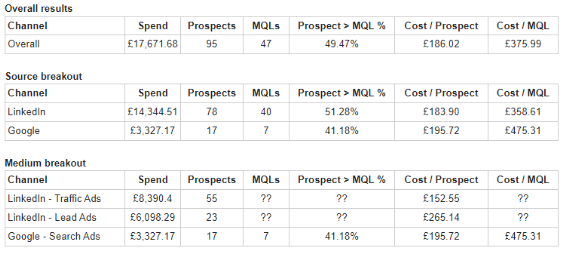To start our journey, we ran our discovery process with Neighbourly, where we ran through 37 questions in detail, to really understand their business and their needs.
From this, we then used our discoveries to create, implement and deliver a business focused strategy across LinkedIn and Google Ads. Due to the business’s desire to keep user tracking to a minimum. Meaning, we couldn’t do website retargeting or website conversion tracking, which are usually key tools in a paid advertising strategy.
This significantly reduced the strategies we could deploy, and the analysis post-click we could gather from our campaigns.
We managed to largely address the conversion aspect with Neighbourly by integrating offline conversion tracking from their CRM back to the ads platforms, so that we could do offline conversion tracking and see which areas of the campaigns were working to generate marketing qualified leads, and which areas were not, without needing to share data with 3rd party ad networks.
This allowed us to do more thorough continual optimisation for Neighbourly, through using on-platform and offline analysis to turn off the areas that were not working, and do more of what was working.
As part of campaign management we continually optimised the account, which included running splitting out and testing of audiences to compare which types of audiences were generating the most cost efficient leads per campaign and then running with the best performing audiences. We also paused any areas that were not working through pausing the worst performing, audiences, ads and keywords to name a few.
As a result of this strategy and through continuous improvement. In just 3 Months, we generated a cost per lead decrease of 54%, and over 8 months this has leaped up to a decrease in cost per lead of 74%. Comparing it on the same spend, this is an increase from 95 leads a month to 175 a month now.
